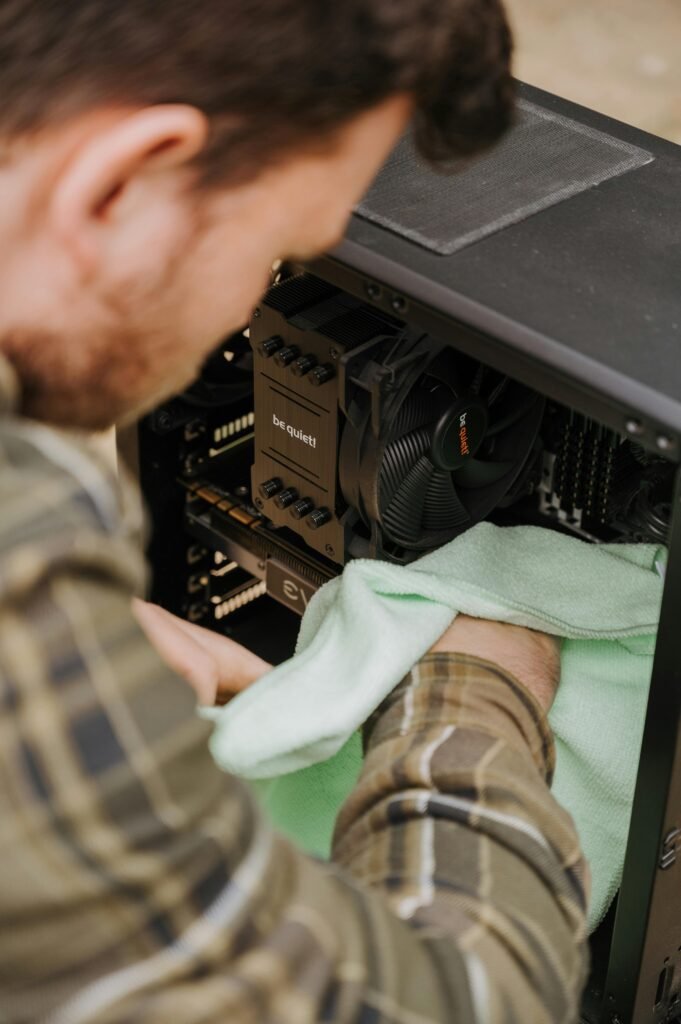Have you ever wondered what it takes to care for a cat? If you’re like me, you might have found yourself at a friend’s place watching a cat do its thing, as they do, and suddenly thought, “I need that kind of serenity in my life.” If you’ve recently adopted a cat or are considering taking the plunge, you’re probably in search of advice for navigating the world of cat ownership. As a novice cat owner myself, I’ve gathered some tips and tricks that might make this journey a little smoother. Let’s talk about what it means to care for our feline friends, shall we?

This image is property of images.pexels.com.
Settling in: Introducing Your Cat to Its New Home
Remember the first time you moved into a new place? It was a mix of excitement and dread. Cats experience something similar, but without the benefit of knowing what’s happening. To make this transition easier, start by setting up a small, enclosed area for your cat with its essentials: food, water, litter box, and a comfy bed. This helps them adjust to their new environment more gently rather than overwhelming them with the entire house at once.
The Power of Patience
Much like dealing with a new roommate, patience is key. Every cat has its own unique personality, so allow them the time they need to explore and become comfortable. They might sniff around curiously, or hide for long stretches; both are perfectly normal. Before you know it, they’ll be acting like they own the place. Well, actually, in their minds, they probably do.
Nutrition: What’s on the Menu?
Feeding a cat isn’t as simple as picking up any bag of kibble. Cats are obligate carnivores, meaning they require a diet high in animal protein and specific nutrients that aren’t found in plant material. Selecting the right food can feel like navigating a grocery store aisle blindfolded, but here’s some food for thought.
Wet Food vs. Dry Food
Some swear by wet, others by dry, and some mix it up. Wet food tends to have a higher moisture content which can be beneficial for cats, especially those who are prone to urinary tract issues. However, dry food is often more convenient and easier to store. They each have their pros and cons, so it might take a bit of experimenting—and some feline feedback—to find what works best.
Here’s a simple breakdown:
| Criteria | Wet Food | Dry Food |
|---|---|---|
| Moisture | High, keeps them hydrated | Low, might need more water intake |
| Storage | Requires refrigeration after opening | Easy to store and has a longer shelf life |
| Dental Health | Less effective for cleaning teeth | Can help reduce plaque |
| Expense | Generally more expensive | Usually more budget-friendly |
Treats and Moderation
Much like anyone caught with their hand in the cookie jar, cats love treats. But moderation is key. You wouldn’t sit down with an entire cake, right? Treats should make up no more than 10% of your cat’s diet to ensure they’re receiving balanced nutrition.

This image is property of images.pexels.com.
Hydration: The Water Bowl Saga
It might seem simple, but keeping your cat hydrated can sometimes feel like a full-fledged mission. Cats are notorious for not drinking enough water, a trait inherited from their ancestors who thrived in desert environments. To encourage drinking, make sure to provide clean, fresh water daily. Some cats prefer running water, leading many owners to invest in a cat water fountain. It may feel a bit over the top, but just think of it as their very own mini spa experience.
Litter Box: The Unsung Hero of Cat Care
Ah, the litter box—a crucial yet often underappreciated aspect of cat care. Selecting a litter box and deciding on the litter type can be surprisingly complex decisions. Who knew there were so many options?
Choosing the Right Box
The world of litter boxes can be overwhelming, akin to choosing between umpteen shades of off-white paint at the hardware store. You’ve got open pans, covered boxes, self-cleaning models—the list goes on. The best bet is to start simple; many cats prefer an open litter box because it offers easy access and doesn’t trap odors inside.
Litter: Clumping, Crystal, or Natural?
You will also need to choose the type of litter:
| Litter Type | Features | Considerations |
|---|---|---|
| Clumping | Easy to scoop, effective odor control | Can be dusty |
| Crystal | Low dust, absorbs moisture well | Can be expensive, and not as eco-friendly |
| Natural/Alternative | Eco-friendly, biodegradable | May not clump as well, sometimes pricier |
Each cat has its own preference, so you might need to test a few before finding that perfect match.
Keep It Clean
A clean litter box makes for a happy cat. If only they came with a self-cleaning feature for us humans! Regular scooping and a full change-out at least once a week are the golden rules. Trust me, the effort is well worth the blissful domestic harmony you’ll enjoy.

This image is property of images.pexels.com.
Grooming: It’s More Than Just Looking Good
Cats are famously independent when it comes to cleanliness, but they can still use a little help. Depending on whether your cat has short or long hair, its grooming needs will vary.
The Basics of Brushing
Regular brushing reduces shedding and minimizes hairballs, which are as much fun for cats as stepping on LEGO bricks is for us. Long-haired breeds need daily attention, while short-haired cats appreciate a gentler touch a couple of times a week.
Nail Care: Scratching Posts to the Rescue
Cats naturally keep their claws at a fine point using good old-fashioned claw sharpening on anything available: furniture, drapes, you name it. Having a scratching post provides a dedicated outlet for this behavior. Plus, it’s good for their paws and satisfying for their feline souls. If trimming is required, do so carefully—cutting too deeply can lead to discomfort for your cat.
Health: A Purr-fect Plan
Addressing health care is absolutely essential. It’s like setting up routine brunch dates except no questionable bottomless mimosas this time—just periodic vet check-ups and vaccinations.
Finding the Right Veterinarian
Selecting a veterinarian can be as daunting as picking a new dentist, but it’s worth the research. Ask for recommendations from fellow animal lovers or use online reviews to guide your choice. Regular checkups keep your cat healthy and allow early detection of any potential health issues.
Vaccinations and Preventive Care
Keeping your indoor cat safe doesn’t necessarily exempt it from the risks of disease. Core vaccines protect against serious feline illnesses, while parasite prevention keeps the unwanted guests like ticks and fleas at bay. Scheduling these essential health measures with your vet ensures your cat stays in top shape to live its best life.
Signs to Watch For
Cats are masters of disguise when feeling unwell. Feline intuition? More like feline enigma. So remember to observe their behavior, eating habits, and appearance for any signs of distress. If something feels off, trust your instincts and consult the vet.
Bonding: Beyond the Catnip
Building a bond with your cat is like nurturing any other relationship—it takes time, attention, and the occasional willing suspension of personal space.
Understand Their Love Language
Someone once told me cats find staring uncomfortable, but it’s really a love letter for cats. That slow blink? When two eyes meet in a private conversation? Pure affection. Reciprocate and watch the magic unfold, like rude yet charming telepathy.
Interactive Play and Toys
Interactive play is vital for a cat’s physical and mental health. Whether it’s using a wand toy or a laser pointer, the goal is to stimulate their hunting instincts, keeping them active and engaged. And let’s not forget toys, from stuffed mice to crinkly balls. Variety is key to keeping curiosity alive and well, much like any good Netflix binge session.
Alone Does Not Mean Lonely
Cats aren’t known for being clingy, but that doesn’t mean they don’t treasure company. Even independent ones appreciate shared moments with their human. Take a minute to sit quietly with them; sometimes, just sharing a space in comfortable silence does wonders for a relationship.
Conclusion: My Life with The Purr Machine
Being a cat owner doesn’t just mean providing food and shelter; it involves nurturing a bond and ensuring their health and happiness. I didn’t anticipate how rewarding that throaty motor purr would be, but it’s a joy like no other.
Taking care of a cat may have its challenges, but it also comes with endless affection, companionship, and, dare I say, a bit of feline wisdom. So go ahead and embrace the experience, because at the end of the day, your cat isn’t just a pet—they’re family.





